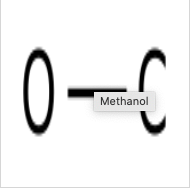Use of methanol molecular weight
Methanol molecular weight will be naturally released into the environment from volcanic gas, vegetation and microorganisms during industrial use. Ambient air and solvents may come into contact during use. Acute (short-term) or chronic (long-term) exposure to methanol through inhalation or ingestion may cause blurred vision, headache, dizziness and nausea. There is no information on the effects of methanol on human reproduction, development or carcinogenesis. Birth defects were observed in offspring of rats and mice inhaled methanol. The EPA has not classified methanol as carcinogenic.
Aluminum Phosphate formula, also known as Aluminium monophosphate formula or Monoaluminum phosphate formula is explained in this article. Aluminum Phosphate is formed by the anion PO43- (phosphate) and cation Al3+ (aluminium). The molecular or chemical formula of Aluminum Phosphate is AlPO4.
Aluminum Phosphate occurs as a white crystalline powder. In its aqueous form, it is a colourless liquid. It is insoluble in water. Naturally, it occurs as a mineral berlinite. Aluminium monophosphate in its dihydrate form is found in minerals such as meta-variscite and variscite. Due to its piezoelectric material property, it is widely used in electrical and electronic industries.
Methanol is a clear, colorless liquid with a characteristic pungent odor (NTP NIEHS web accessed 2/16/2013). The air odor threshold has been reported as 1500 ppm (approximately 2000mg/m3), much higher than the occupational guidelines.
Methanol (methyl alcohol; wood alcohol) is used extensively as a solvent for lacquers, paints, varnishes, cements, inks, dyes, plastics, and various industrial coatings. Large quantities are used in the production of formaldehyde and other chemical de
Methanol, also known as methyl alcohol, wood alcohol, wood naphtha, methyl hydrate, or wood spirits, is a chemical with the formula CH3OH (often abbreviated MeOH). Methanol acquired the name “wood alcohol” because it was once produced chiefly as a byproduct of the destructive distillation of wood. Today, industrial methanol is produced in a catalytic process directly from carbon monoxide, carbon dioxide, and hydrogen.




